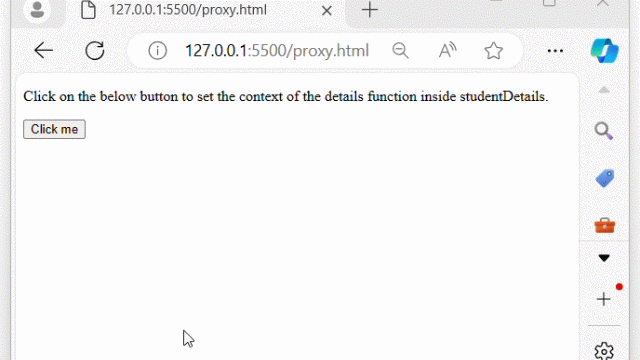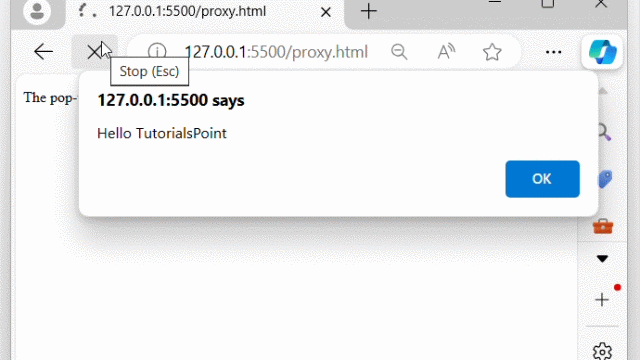
- jQuery Tutorial
- jQuery - Home
- jQuery - Overview
- jQuery - Basics
- jQuery - Syntax
- jQuery - Selectors
- jQuery - Events
- jQuery - Attributes
- jQuery - AJAX
- jQuery DOM Manipulation
- jQuery - DOM
- jQuery - Add Elements
- jQuery - Remove Elements
- jQuery - Replace Elements
- jQuery CSS Manipulation
- jQuery - CSS Classes
- jQuery - Dimensions
- jQuery - CSS Properties
- jQuery Traversing
- jQuery - Traversing
- jQuery - Traversing Ancestors
- jQuery - Traversing Descendants
- jQuery References
- jQuery - Selectors
- jQuery - Events
- jQuery - Effects
- jQuery - HTML/CSS
- jQuery - Traversing
- jQuery - Miscellaneous
- jQuery - Properties
- jQuery - Utilities
- jQuery Plugins
- jQuery - Plugins
- jQuery - PagePiling.js
- jQuery - Flickerplate.js
- jQuery - Multiscroll.js
- jQuery - Slidebar.js
- jQuery - Rowgrid.js
- jQuery - Alertify.js
- jQuery - Progressbar.js
- jQuery - Slideshow.js
- jQuery - Drawsvg.js
- jQuery - Tagsort.js
- jQuery - LogosDistort.js
- jQuery - Filer.js
- jQuery - Whatsnearby.js
- jQuery - Checkout.js
- jQuery - Blockrain.js
- jQuery - Producttour.js
- jQuery - Megadropdown.js
- jQuery - Weather.js
- jQuery Useful Resources
- jQuery - Questions and Answers
- jQuery - Quick Guide
- jQuery - Useful Resources
- jQuery - Discussion
jQuery Event $.proxy() Method
The jQuery event $.proxy() method allows you to create a new function with a specific context (i.e., its value). This is useful for binding an event handler to an element where the context needs to point back to a different object.
The $.proxy() method was deprecated in jQuery version 3.3.
Syntax
Following is the syntax of the jQuery event $.proxy(() method −
$(selector).proxy(function, context)
Parameters
The method accepts two parameters named 'function' and 'context'. These parameters are described below −
- function − The existing function whose context will be changed.
- context − An object to which the context of the function should be set.
Return Value
This method does not return any value.
Example 1
The following is the basic example of the jQuery event $.proxy() method −
<!DOCTYPE html>
<html>
<head>
<script src="https://ajax.googleapis.com/ajax/libs/jquery/3.6.0/jquery.min.js"></script>
</head>
<body>
<p>Click on the below button to set the context of the details function inside studentDetails.</p>
<button>Click me</button>
<br><br>
<span></span>
<script>
var studentDetails = {
details: function() {
$('span').text("Student details: Name, age, city, etc.");
}}
$("button").click($.proxy(studentDetails, "details"));
</script>
</body>
</html>
Output
After executing the above program, a button is displayed. When clicked, it sets the context of the 'details' function within the 'studentDetails' object −
Example 2
Following is another example of the jQuery event $.proxy(() method. We use this method to change the context of a function to a specific object −
<!DOCTYPE html>
<html>
<head>
<script src="https://ajax.googleapis.com/ajax/libs/jquery/3.6.0/jquery.min.js"></script>
</head>
<body>
<p>The pop-up alert "Hello TutorialsPoint" will appear on the browser screen every 2 seconds.</p>
<script>
var obj = {
name: "TutorialsPoint",
sayHello: function(){
alert("Hello " + this.name);
}
};
//setInterval(obj.sayHello, 2000); it will display only "Hello" + undefined.
setInterval($.proxy(obj.sayHello, obj), 2000);
</script>
</body>
</html>
Output
The program above displays a pop-up alert with the specified content every two seconds −


